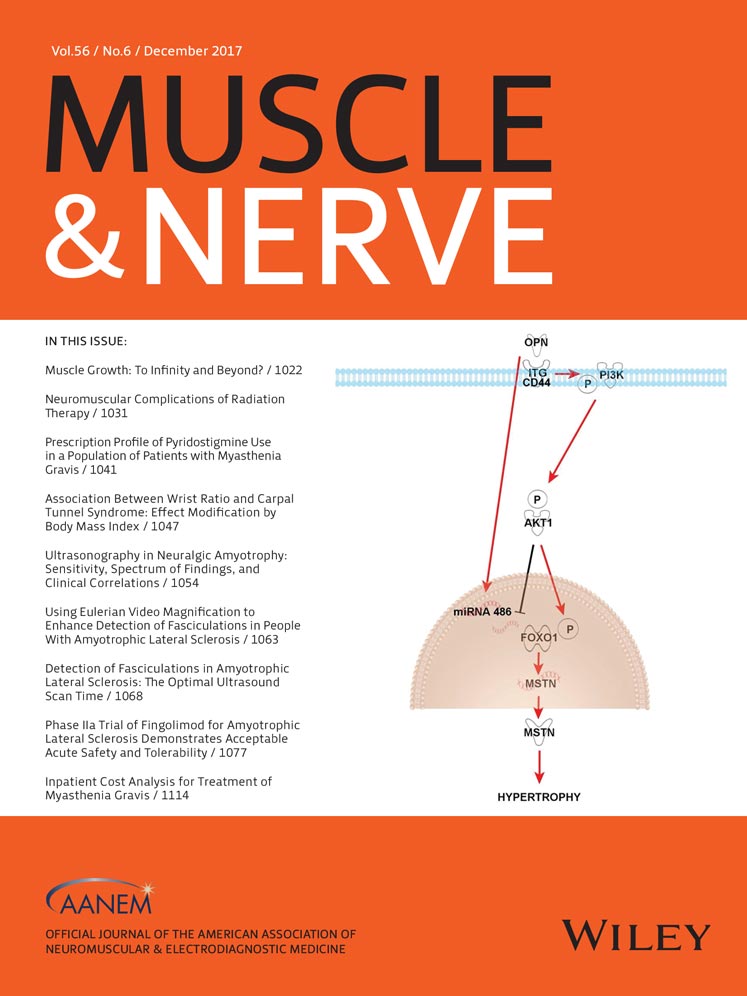Magnetic resonance neurography and diffusion tensor imaging of the peripheral nerves in patients with Charcot-Marie-Tooth Type 1A
Funding: This work received support from the UNIK Partnership Foundation, Siemens A/G Copenhagen, the Danish Diabetes Academy supported by the Novo Nordisk Foundation, and Aarhus University (to M.V.); the BEVICA Foundation (to M.V. and H.A.); and the Deutsche Forschungsgemeinschaft (SFB 1158 Project A3 to M.P.; SFB 1118 BI-1281/3-1 to S.H.).
Conflicts of Interest: The authors have no conflicts of interest.
ABSTRACT
Introduction
Investigation of peripheral neuropathies by magnetic resonance neurography (MRN) may provide increased diagnostic accuracy when performed in combination with diffusion tensor imaging (DTI). This study seeks to evaluate DTI in the detection of neuropathic abnormalities in Charcot-Marie-Tooth type 1A (CMT1A).
Methods
MRI of the sciatic and tibial nerves, including MRN and DTI, was prospectively performed in 15 CMT1A patients and 30 healthy controls (HCs). The following MRI parameters were evaluated and correlated with clinical and neurophysiological findings: T2-relaxation time, proton spin density (PD) and DTI (fractional anisotropy [FA] and apparent diffusion coefficient [ADC]).
Results
DTI showed lower FA and higher ADC in CMT1A compared with HCs. T2 relaxation time showed no difference; however, PD of the sciatic nerve was higher in CMT1A. There were some close associations between neuropathy severity and MRN-DTI, with the closest correlation between FA and nerve conduction velocity in the sciatic nerve (r = 0.76, P < 0.01).
Discussion
MRN-DTI evaluation of sciatic and tibial nerves improves the detection of nerve abnormalities in patients with CMT1A. Muscle Nerve 56: E78–E84, 2017




